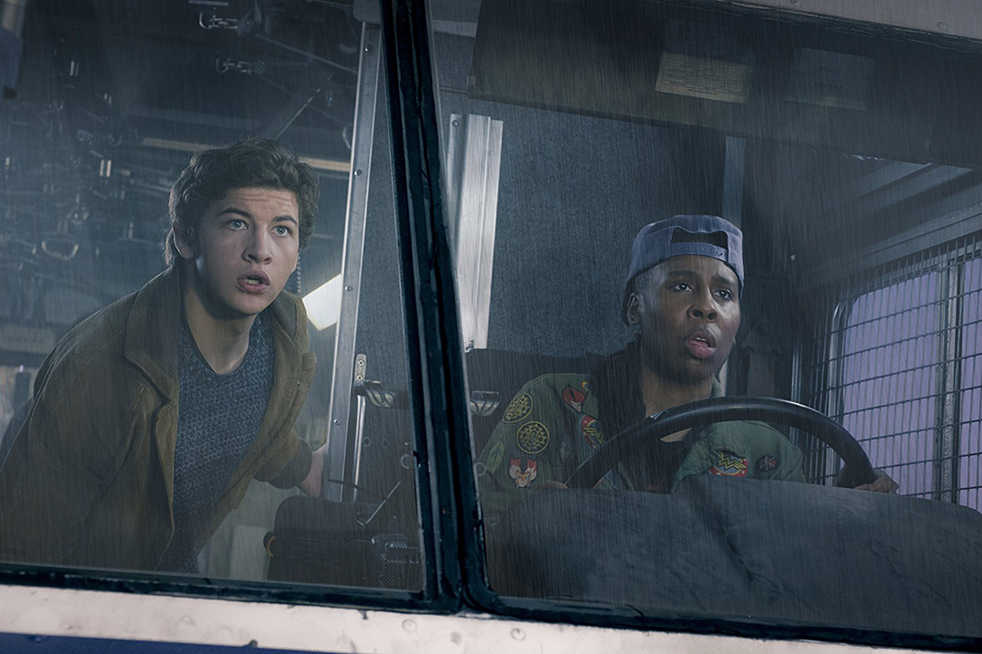“Ready Player One” feels out of place in today’s cinema landscape. Based on the novel by Ernest Cline that explores a futuristic world steeped in 1980s nostalgia, the film’s gratuitous nostalgic elements are overshadowed by the sense that this film was meant to come out maybe 20 years ago.
“Ready Player One,” likely unintentionally, harkens back to works that follow a completely bland, unremarkable everyman as he learns that he is inexplicably special and must use his nonspecific specialness to save the world and defeat a cartoon villain. Along the way, he meets a beautiful girl who exists only to fall madly in love with him and support his quest for glory. In the end, all is resolved with a kiss and an “And I would have gotten away with it too!” from the bad guy.
Directed by Steven Spielberg (“Jaws”), this adaptation takes place in the slums of Columbus, Ohio in 2045. The 18-year old orphan Wade Watts (Tye Sheridan, “The Tree of Life”) spends his days adopting the avatar of Parzival within the VR realm known as the Oasis.
Launched in the 2020s by reclusive genius James Halliday (Mark Rylance, “Dunkirk”), the Oasis is a massive digital world and playscape into which most people escape to find reprieve from their real lives. Halliday, a man obsessed with 1980s pop culture, seeded three 80s oriented keys and clues into his game to be found upon his death.
The player that finds all three keys will inherit Halliday’s estate and have full control over the Oasis. Watts is a “Gunter,” one of many players seeking to find the keys before Nolan Sorrento (Ben Mendelsohn, “Rogue One”), the CEO of the oppressive telecom company Innovative Online Industries (IOI), can do so and pervert the Oasis for his own nefarious ends.
On his quest, Watts finds a romantic interest in the form of fellow Gunter Art3mis (Olivia Cooke, “Thoroughbreds”), who leads the insurgent forces fighting IOI in the real world. Perpetually by his side is Wade’s emphatically professed best friend Aech (Lena Waithe, “Master of None”).
“Ready Player One” might have been compelling if viewers were moored to relatable, multidimensional characters. Unfortunately, Cline, who co-wrote the screenplay with Zak Penn, felt that the only characteristics worth imparting to his protagonist are a vague sense of poverty and an encyclopedic knowledge of 1980s pop culture. After all, who needs a personality when one can ace ‘80s trivia?
Though several characters wax poetic about how special Wade is and how important it is that he be the one to inherit the Oasis, Wade’s flat character fails to meaningfully engage viewers in the narrative. There is little engaging to viewers about a man who proudly garners cheers by belting out pre-rehearsed facts about ‘80s video games.
Perhaps if there were other, more developed supporting characters, the movie would be elevated, but nearly all other characters exist as planets in Wade’s uninspiring orbit. Cooke’s Art3mis plays the role of the aloof female heroine who melts and falls to Wade’s side as soon as he stutters out that he loves her shortly after their first meeting. Through the remainder of the film, she exists as little more than Wade’s cheerleader, the object of some kind of male wish fulfillment.
Mendelsohn’s Sorrento likewise is exaggeratedly evil. But, in Cline and Penn’s script, it appears as if Sorrento’s most despicable attribute is his apathy towards the 80’s and video games, despite his aspirations to monopolize and monetize the Oasis.
The only truly delightful character is Mark Rylance’s James Halliday. Though Halliday is as archetypal and flat as the other characters, Rylance is able to imbue this introverted Wozniak-type man with charmingly humorous idiosyncrasies that assure viewers that, yes they are indeed watching a real person.
Though the script and source material are rife with head-scratchers, Spielberg’s direction is competent and dynamic. Numerous CGI set pieces, one of which takes place within a classic horror movie, are wonderfully reimagined within the world of Spielberg’s Oasis.
Spielberg is able to leverage his characteristic long takes to capture engaging and kinetic action sequences. Early in the film, Spielberg carries viewers through a race between Watts’s Delorean and several thousand other cars, treating viewers to a carnal display of destruction and adrenaline.
While scenes like that are enjoyable, by the film’s end, the fun has faded and the veneer of nostalgia is rather uncomfortable. Though Cline and Spielberg slap a flimsy moral about the importance of appreciating reality in a virtual world on top of the film, at its core “Ready Player One” plays uncomfortably like the quintessential male nerd fantasy.
Lacking in any self-awareness, “Ready Player One” feels so out of touch with reality because it chronicles the assent of a previous generation’s nerd. Where the term “nerd” has rightfully rid itself of its social stigma and is widely celebrated in pop culture today, Wade Watts serves as a surrogate for the archetypal nerd of the ‘80s and ‘90s: the male nerd who was stereotypically bullied by jocks and spurned by women for his interest in pop culture.
So, while the pop culture references constantly evoke the past, Cline, Penn and Spielberg’s film truly feels like a product of the ‘80s, offering viewers a largely unrelatable, somewhat problematic underdog story that would fit in more with 1984’s “Revenge of the Nerds” than any movie today.
